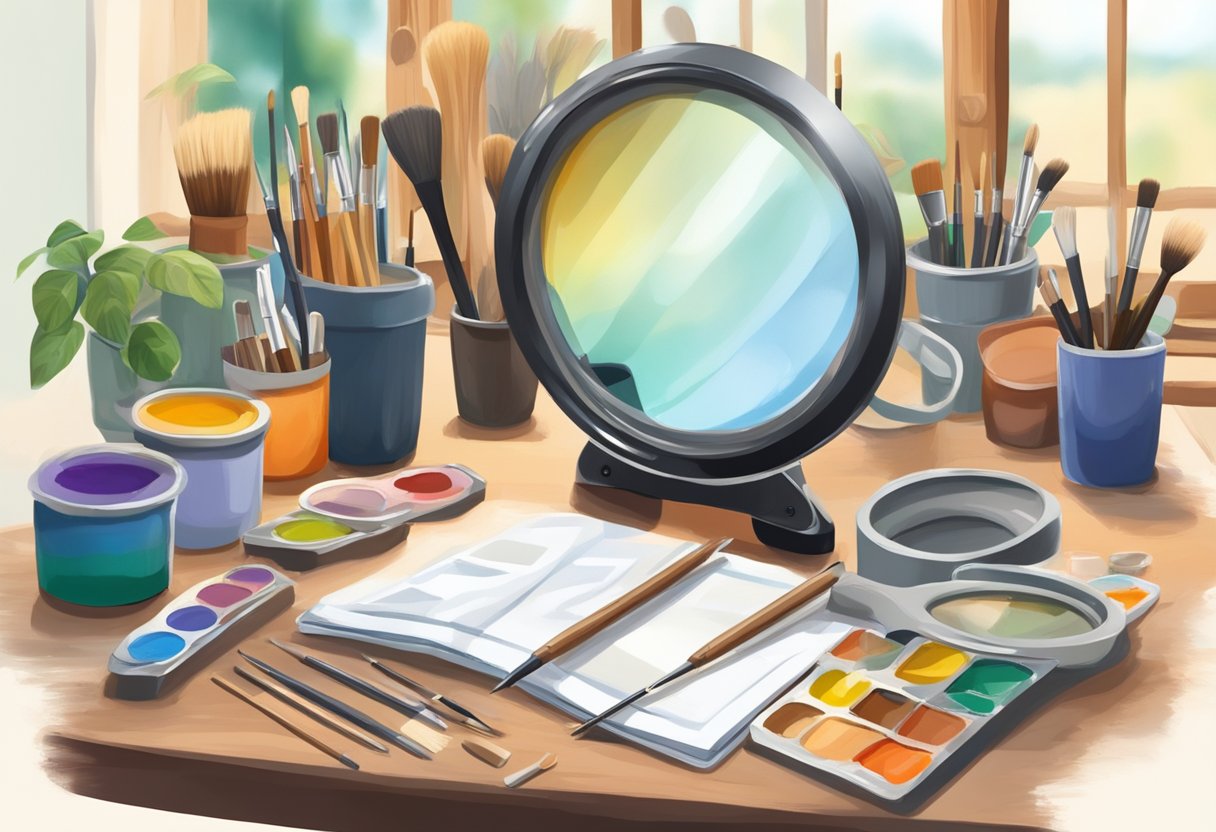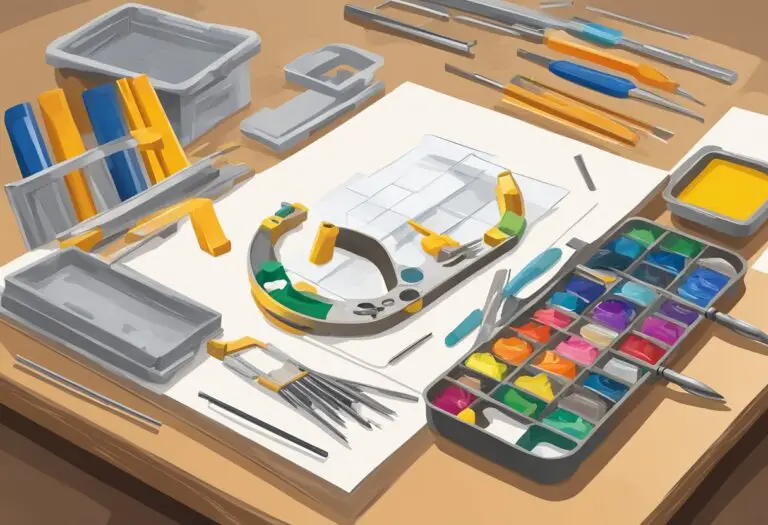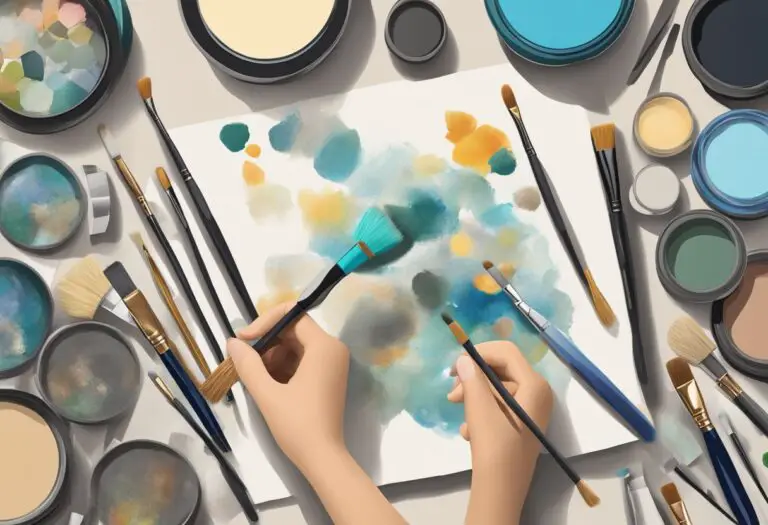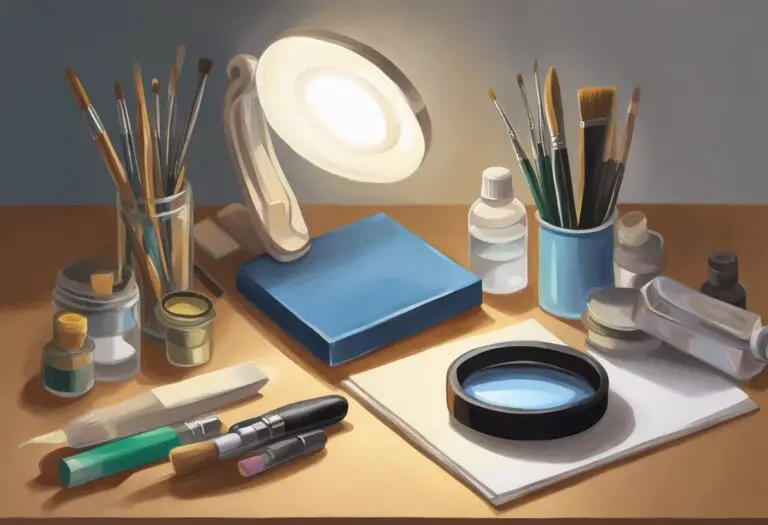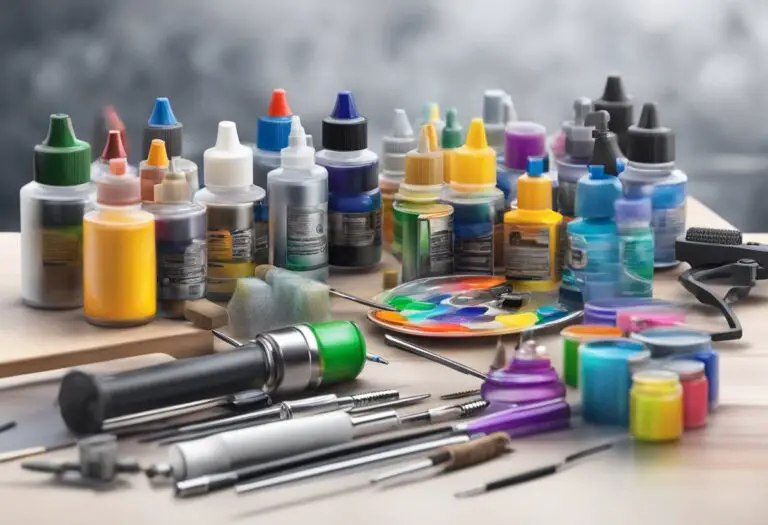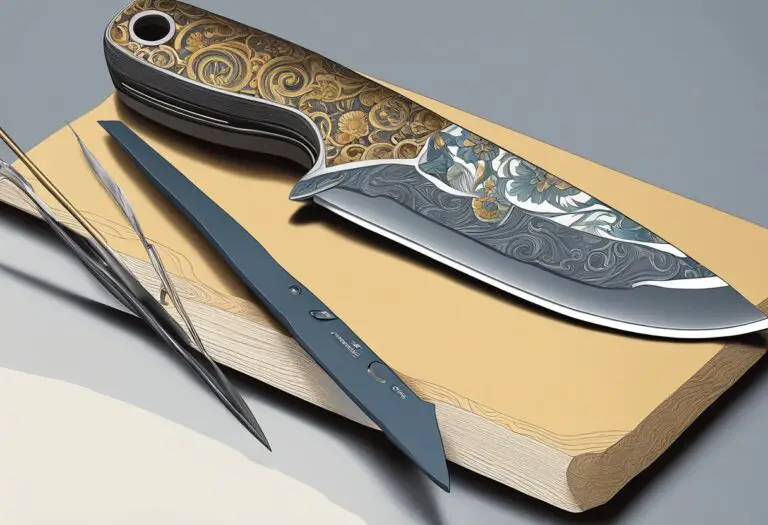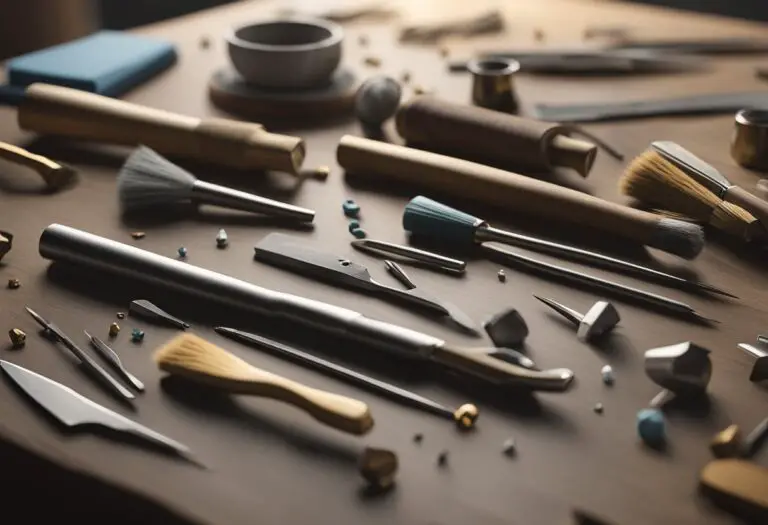Best Palette for Miniature Painting Essentials
Finding the best palette for miniature painting is crucial. A dedicated palette specifically designed for miniature artists can greatly enhance their painting experience, offering precision, control, and ease of use.
In this article, we will explore the essential factors to consider when selecting a palette for miniature painting. We will delve into the importance of using a specialized palette and provide a comprehensive buying guide to help artists make an informed decision.
Whether you are a seasoned miniature artist or just starting, the right palette can make a significant difference in your artwork. From size and material to functionality and portability, each aspect plays a role in creating stunning miniatures.
Furthermore, we will showcase the top palettes available in the market, including porcelain, glass, plastic, and custom-made options. Additionally, we will discuss compact and portable palettes that are perfect for artists working in small spaces or on the go.
This article will also provide valuable insights on color mixing techniques, palette accessories, and organization solutions that can enhance your painting process. We will offer tips on cleaning and caring for your palette to ensure its longevity.
By considering all these aspects, artists can find the best palette for miniature painting that suits their needs and helps them achieve precision and control in their artistic journey.
Importance of a Dedicated Palette for Miniature Painting
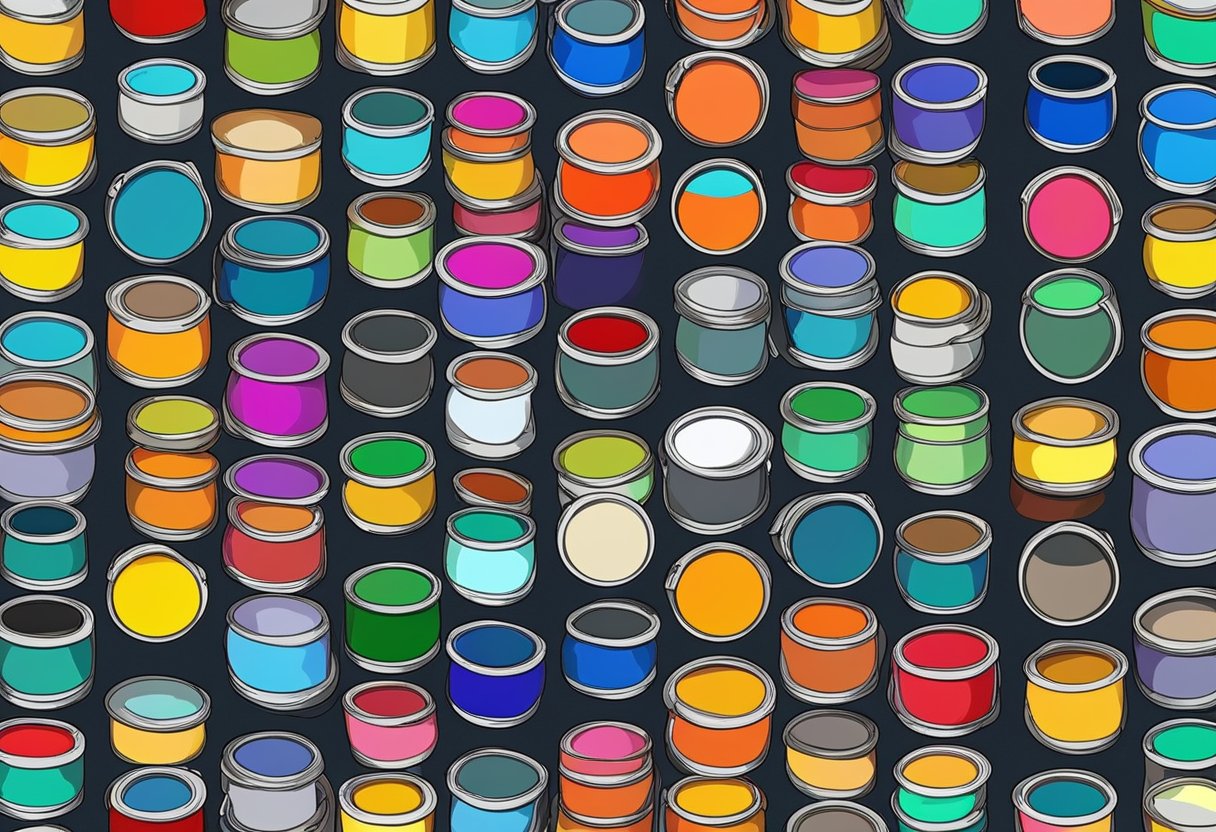
When it comes to the art of miniature painting, having a dedicated palette is of utmost importance. A miniature painting palette is specifically designed to meet the unique needs of artists who work on small-scale projects. It offers several advantages that greatly enhance the painting experience and allow for precise control over the artwork.
Miniature artists require a palette that provides ample space for mixing and blending colors. A dedicated palette ensures that the artist has enough room to work with various shades and tones without the risk of cross-contamination. Using a regular-sized palette can be challenging when working on intricate details, as it may restrict the artist’s ability to create precise color combinations.
Furthermore, a miniature hobby palette is typically made from materials that are ideal for handling small amounts of paint. Porcelain, glass, and custom-made palettes are among the popular options that offer a smooth surface for mixing paints and are easy to clean. These materials also prevent paint from drying too quickly, allowing artists to work with the desired consistency and avoid wastage.
Another advantage of using a dedicated palette for miniature painting is the organization it provides. With a specialized palette, artists can easily arrange their colors, making it convenient to locate and mix paints during the painting process. This organization not only saves time but also improves efficiency and helps maintain a clean working surface.
Additionally, miniature painting palettes often come in compact sizes, making them portable and ideal for artists who work on the go or have limited studio space. These compact palettes can easily fit into a travel bag or pocket, enabling artists to continue their work anywhere, anytime.
In conclusion, investing in a dedicated palette designed specifically for miniature painting is essential for artists to achieve precision and control in their artwork. A miniature painting palette offers the necessary space, materials, and organization to enhance the painting experience, making it a valuable tool for any miniature artist.
Factors to Consider When Selecting a Palette
When it comes to selecting the perfect palette for your miniature painting needs, there are several important factors to consider. In this comprehensive buying guide, we will explore the key considerations that will help you make an informed decision. Whether you are a seasoned miniature artist or just starting out, investing in the right palette can greatly enhance your painting experience.
Size
The size of the palette is an essential factor to consider, as it determines the amount of paint you can mix and work with. For miniature artists, a smaller palette is generally preferred, as it allows for greater precision and control. Look for compact palettes that provide enough surface area for mixing colors while still being easy to handle.
Material
The material used to make the palette can significantly impact your painting process. Porcelain and glass palettes are popular choices among miniature artists due to their smooth and non-porous surfaces. They are easy to clean and provide a consistent mixing surface. Alternatively, plastic palettes are lightweight and more affordable, making them a suitable option for artists on a budget.
Functionality
Consider the functionality of the palette in terms of its design and features. Some palettes may have separate compartments for mixing different color families or wells for holding diluted washes. This can help keep your color palette organized and prevent cross-contamination of colors. Look for palettes with comfortable grip handles or thumbholes for ease of use during long painting sessions.
- Size: Opt for a compact palette that offers enough mixing space.
- Material: Choose between porcelain, glass, or plastic based on your preferences and budget.
- Functionality: Consider features like separate compartments and comfortable grip handles.
By keeping these factors in mind, you can confidently select a palette that suits your miniature painting needs. Now, let’s explore the top palettes available in the market and discover the perfect one for you.
Types of Palettes for Miniature Painting
In the world of miniature painting, having the right palette is crucial for achieving the desired results. Artists can choose from a variety of palettes, each offering unique features and advantages.
Glass Palettes
Glass palettes are a popular choice among miniature artists due to their smooth surface and ease of cleaning. They provide a clear and reflective surface, allowing artists to accurately judge colors and values. Glass palettes are also resistant to staining, making them an excellent option for artists who work with a wide range of pigments.
Porcelain Palettes
Porcelain palettes are known for their durability and versatility. They have a smooth and resistant surface that makes it easy to mix and blend colors. Porcelain palettes also have the advantage of keeping the paints moist for longer periods, reducing the need for frequent reapplication.
Plastic Palettes
Plastic palettes are lightweight and affordable, making them a popular choice for beginners and artists on a budget. They are easy to clean and offer a variety of well designs to accommodate different mixing needs. However, plastic palettes may not provide the same level of color accuracy and longevity as glass or porcelain palettes.
Custom-made Palettes
Many artists prefer to create their own custom-made palettes to meet their specific needs. This can involve using materials such as acrylic sheets, wooden panels, or even repurposed materials. Custom-made palettes allow artists to have complete control over the size, shape, and layout of their mixing surfaces.
| Palette Type | Pros | Cons |
|---|---|---|
| Glass Palettes | – Smooth and reflective surface for accurate color judgment – Easy to clean and resistant to staining |
– Fragile and prone to breakage if mishandled |
| Porcelain Palettes | – Durable and versatile – Keeps paints moist for longer periods |
– Can be more expensive than other options |
| Plastic Palettes | – Lightweight and affordable – Easy to clean |
– May not offer the same color accuracy as other options |
| Custom-made Palettes | – Allows for complete customization – Perfect for specific needs and preferences |
– Requires time and effort to create – May not be as readily available as other options |
When choosing a palette for miniature painting, it is important to consider your individual preferences and painting style. Whether you prefer the clarity of glass, the durability of porcelain, the affordability of plastic, or the customization of a custom-made palette, there is a perfect option out there for you.
Compact and Portable Miniature Painting Palettes
When it comes to miniature painting, having a compact and portable palette is essential for artists who work in small spaces or need to paint on the go. These specially designed palettes offer features and advantages that cater to the unique needs of miniature artists.
One of the key benefits of a compact palette is its space-saving design. With limited workspace, miniature artists need a palette that doesn’t take up much room. Compact palettes are typically smaller in size, allowing artists to have all their colors within reach without cluttering their workspace.
Furthermore, portable miniature painting palettes offer convenience for artists who travel or attend painting workshops. These palettes are lightweight and easy to carry, making them perfect for artists on the move. They often come with secure closures to prevent color mixing and spillage during transportation.
Another advantage of compact and portable palettes is their versatility. Many of these palettes feature removable mixing wells or trays, allowing artists to customize their palette layout according to their preferences. This adaptability ensures that artists can create a personalized setup that suits their painting style and workflow.
Compact palettes for miniatures are available in various materials, such as plastic, porcelain, or glass. Artists can choose the material that best suits their needs and preferences. Plastic palettes are lightweight and durable, while porcelain and glass palettes provide a smooth mixing surface and are easy to clean.
Whether you are a beginner or an experienced miniature artist, a compact and portable palette can enhance your painting experience by providing convenience, organization, and adaptability. Consider investing in a dedicated palette that meets your unique needs as a miniature painter and empowers you to create intricate and detailed artwork.
Mixing Colors on a Miniature Painting Palette
When it comes to creating stunning miniature artworks, mastering color mixing is a crucial skill for every artist. The right miniature paint mixing palette can be a game-changer, allowing artists to blend and harmonize colors with precision and control. In this section, we will explore different techniques for effectively mixing colors on a miniature painting palette, offering valuable insights and tips to help artists elevate their miniature painting skills.
1. Choosing the Right Palette
The first step in achieving successful color mixing on a miniature painting palette is selecting the right type of palette. Consider a palette specifically designed for miniature painting, such as a small ceramic or glass palette with multiple wells or compartments. These palettes provide ample space to separate and mix the various colors needed for your artwork, ensuring easy access and color organization.
2. Placement of Colors
Organize your colors strategically on the miniature painting palette to facilitate efficient mixing. Start by placing primary colors (red, blue, and yellow) in separate compartments, allowing easy access to these fundamental hues. Then, dedicate additional wells for secondary colors (orange, green, and purple) and any other colors you frequently use in your artwork. This arrangement will enable quick and seamless color mixing without any confusion.
3. Gradual Mixing Technique
One effective technique for achieving desired hues is the gradual mixing method. Begin by applying a small amount of one color to a well or compartment on your miniature painting palette. Then, gradually add the second color, carefully observing the changes in the mixture. This method allows you to control the intensity and saturation of the resulting hue, achieving precise color variations suited to your artistic vision.
4. Blending Techniques
Experiment with various blending techniques to create unique color effects on your miniature painting palette. Consider using a palette knife to mix colors, gently swirling them together to create gradients or soft transitions. Alternatively, use a small brush or cotton swab to blend colors directly on the palette. These techniques offer artists greater control over color blending, enabling them to produce stunning visual effects in their artwork.
5. Maintaining Color Consistency
Consistency is key when working on miniature paintings, especially when it comes to color mixing. To ensure color consistency throughout your artwork, it is essential to mix enough paint for your project. This prevents discrepancies in shades and hues that may arise from mixing additional batches of paint later. It is also recommended to clean your miniature painting palette between color mixing sessions to avoid unintentional color contamination and maintain true color representation.
6. Practice and Experimentation
Finally, the key to mastering color mixing on a miniature painting palette is practice and experimentation. As you gain experience, try new color combinations, explore different techniques, and push the boundaries of your creativity. Embrace the process of discovery and allow yourself to make mistakes, as they often lead to breakthroughs in color mixing and artistic expression.
| Advantages | Disadvantages |
|---|---|
| Elevates color control and precision | Requires proper cleaning and maintenance |
| Facilitates organized color arrangement | Initial investment in a specialized palette may be required |
| Enables seamless blending and gradient effects | May require experimentation to find the preferred mixing technique |
| Enhances color consistency throughout the artwork | Requires practice and patience to master color mixing skills |
Palette Accessories and Organization for Miniature Artists
When it comes to creating detailed and intricate miniature artworks, having the right tools and organization is key. In this section, we will explore various palette accessories and organization solutions that can elevate the painting process for professional miniature artists. From palette knives to brush holders, let’s discover the essential items that every artist should have in their toolkit.
Palette Knives
Palette knives are versatile tools that allow artists to mix colors, apply texture, and make precise markings on their paintings. For professional miniature artists, palette knives with small, narrow blades are ideal for working on tiny details. These knives enable artists to create crisp edges, smooth surfaces, and precise lines, enhancing the overall quality of their miniature artworks.
Brush Holders
A well-organized workspace is crucial for efficient painting sessions. Brush holders provide a neat and accessible storage solution for miniature artists. By keeping brushes organized and within reach, artists can easily select the appropriate brush for each delicate stroke. There are various brush holders available, from simple cups to roll-up pouches with individual slots, catering to different preferences and needs.
Palette Organizers
Palette organizers are essential for keeping paints well-organized and easily accessible during painting sessions. These organizers come in different styles, including tabletop palettes with separate wells for each color and foldable palette trays that can be easily transported. By having a dedicated space for paints, artists can maintain color consistency and streamline their workflow, saving time and ensuring a smooth painting process.
When it comes to professional miniature painting, having the right palette accessories and organization solutions can make all the difference. Palette knives, brush holders, and palette organizers not only enhance the efficiency and convenience of the painting process but also contribute to the overall quality of the artworks created. By investing in these essential tools, artists can elevate their artistic practice and unlock their full creative potential.
Cleaning and Care Tips for Your Miniature Painting Palette
When it comes to preserving the quality and longevity of your miniature painting palette, proper cleaning and care are crucial. By following these tips, you can ensure that your palette remains in excellent condition, allowing you to create stunning works of art.
1. Cleaning Methods:
To clean your miniature painting palette, **consider the material** it is made of. For porcelain or glass palettes, you can use mild soap and water along with a soft brush or sponge to remove paint residue. Plastic palettes, on the other hand, can be cleaned with a gentle solvent or rubbing alcohol.
2. Preventing Cross-Contamination:
It’s essential to prevent cross-contamination of colors on your palette, as this can impact the accuracy of your miniature painting. To avoid this, **regularly clean and wipe** your palette during painting sessions, removing any unwanted paint that may mix with other colors. By keeping your palette clean, you can maintain the integrity of each color and achieve the desired results.
3. Maintaining Longevity:
To ensure the longevity of your chosen miniature painting palette, take the following steps:
- Avoid scratching the surface of your palette with sharp tools or brushes.
- Store your palette in a clean and dry area to prevent moisture damage.
- Protect your palette from extreme temperatures and direct sunlight.
4. Cleanup Routine:
Establishing a regular cleanup routine is essential in maintaining a clean and organized miniature painting palette. After each painting session, take the time to clean your palette thoroughly, removing any dried or excess paint. This will help you start each painting session with a fresh palette, ensuring that your colors remain pure and vibrant.
By following these cleaning and care tips, you can keep your miniature painting palette in optimal condition, allowing you to unleash your creativity and achieve the best results in your artwork.
| Cleaning and Care Tips for Your Miniature Painting Palette | |
|---|---|
| Cleaning Methods | Consider the material your palette is made of and use the appropriate cleaning methods. |
| Preventing Cross-Contamination | Regularly clean and wipe your palette to prevent unwanted mixing of paint colors. |
| Maintaining Longevity | Avoid scratches, store in a dry area, and protect from extreme temperatures. |
| Cleanup Routine | Establish a regular cleanup routine to maintain a clean and organized palette. |
Conclusion
In conclusion, choosing the right palette for miniature painting is crucial for artists aiming to achieve precision and control in their artwork. Considering factors such as size, material, portability, and organization can help artists find the best palette that suits their needs and enhances their miniature painting journey.
A dedicated palette for miniature painting provides artists with a suitable surface for mixing and blending colors. It allows for better color control and accuracy, ensuring that artists can achieve the desired hues and shades in their artwork.
Furthermore, a well-chosen palette enhances the overall painting experience by offering convenience and ease of use. Artists can opt for compact and portable palettes that are ideal for small spaces or on-the-go painting sessions. Additionally, the availability of palette accessories and organization solutions further enhances the efficiency and organization of the painting process.
By investing in a high-quality palette and following the proper cleaning and care techniques, artists can prolong the lifespan and functionality of their chosen palette. Regular cleaning and preventing cross-contamination of colors contribute to maintaining color consistency and the integrity of the artwork.

